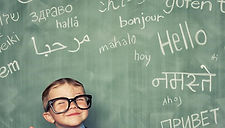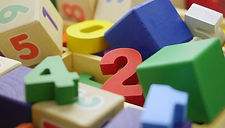
Learning Curriculum
Fun & Creativity
.jpeg)
Creative Play
Through creative play, children engage
their senses, build fine motor skills, and
practice decision-making and problem solving.
When a child discovers that mixing blue and yellow makes green, or
when they create a vibrant collage, they experience a sense of achievement that boosts their confidence and encourages further exploration.

Sensory Play..
The Benefits of Sensory Play in Early Years
Sensory play engages children's senses—touch, sight, smell, sound, and even taste—supporting cognitive development, fine motor skills, and emotional regulation.
Activities like exploring sensory bins with rice or sand, squishing playdough, playing with water, or experimenting with textured materials help children learn through handson experiences. Sensory play also encourages
curiosity, enhances focus, and provides
opportunities for open-ended exploration, allowing children to process information in a relaxed and enjoyable way.

Music class
The Power of Music in Early Years Learning
Music in early years education is a powerful tool for development. Singing, dancing, and playing instruments not only bring joy but also support
language development, enhance memory, and improve listening skills. Rhythmic activities help with coordination and motor skills, while songs with actions boost cognitive connections and language comprehension. Music also encourages self-expression and social interaction, creating a fun and engaging environment where children can explore sounds, rhythms, and melodies while building essential early learning foundations.

Language Development
Supporting Language Development in Early Years
Early years is a critical period for language development, and we provide a rich, bilingual environment which can significantly enhance learning. Exposing children to both Arabic and
English through stories, songs, and daily interactions supports not only vocabulary and communication skills but also cultural awareness and inclusivity. Using visual aids, gestures, and simple, repetitive language in both languages helps children build confidence and understanding. Celebrating cultural differences
through language fosters a sense of identity and belonging while laying a strong foundation for future literacy and academic success.

Math and Numeracy
Building Maths and Numeracy Skills in Early Years
In the early years, maths and numeracy are introduced through playful and practical experiences. Activities like counting objects, sorting shapes, exploring patterns, and engaging in
games with numbers help children develop early mathematical concepts. Hands-on experiences, such as measuring ingredients in sensory play or identifying numbers in the environment, build foundational skills in counting, problem-solving, and logical thinking. By integrating numeracy into
everyday routines and play, children gain confidence with numbers and develop a positive attitude towards maths from an early age.

Learning through play
The Importance of Learning Through Play in Early
Years
Learning through play is fundamental to a child's development, offering a natural and enjoyable way to explore the world. Through play, children develop critical skills such as problem-solving, communication, and creativity. Whether building with blocks, role-playing, or exploring sensory materials, play encourages curiosity, resilience, and independence. It provides opportunities for social interaction, helping children learn to share, take
turns, and understand emotions. By supporting holistic development, play lays a strong foundation for lifelong learning and well-being.


